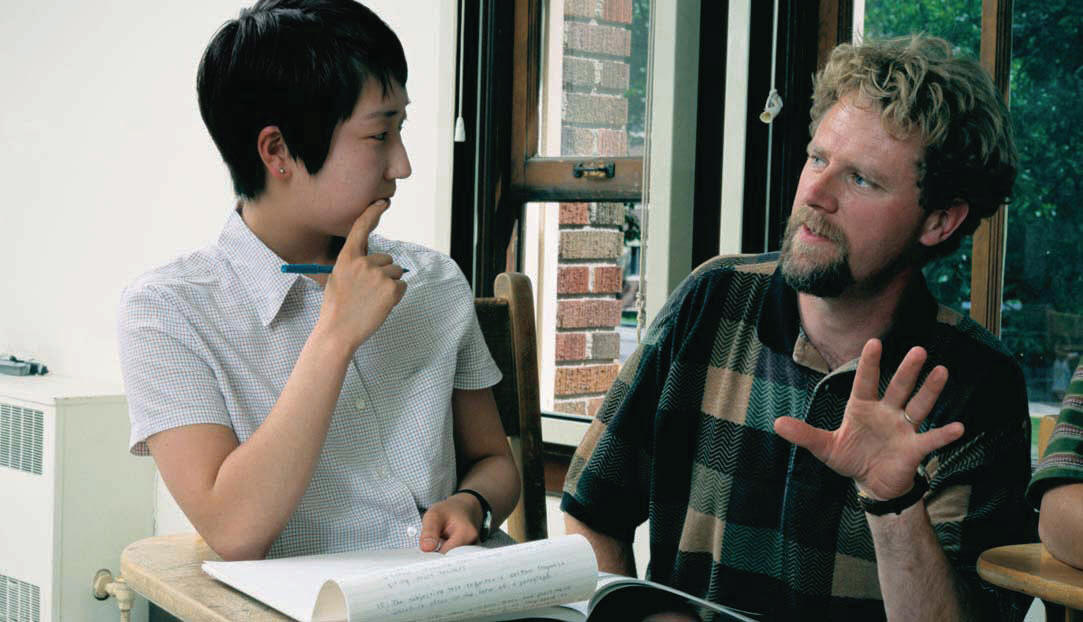Mathematics Standards
Mathematics
Standards
*= Items with an asterisk are those expected of
students who plan to major in these fields of study
(mathematics, computer science, statistics).
I. Computation
A. Successful students know basic
mathematical operations. They:
A.1. apply arithmetic operations with
fractions and integers (e.g., add
and subtract by finding a
common denominator, multiply
and divide, reduce and perform
long division without a
calculator).
A.2. use exponents and scientific
notation.
A.3. use radicals correctly.
A.4. understand relative magnitude.
A.5. calculate using absolute value.
A.6. use the correct order of
arithmetic operations,
particularly demonstrating
facility with the Distributive Law.


A.7.* know terminology for complex
numbers, integers, rational
numbers, irrational numbers
and complex numbers.
B. Successful students know and carefully
record symbolic manipulations. They:
B.1. understand the uses of
mathematical symbols as well as
the limitations on their
appropriate uses (e.g., equal
signs, parentheses, superscripts
and subscripts).
C. Successful students know and
demonstrate fluency with
mathematical notation and
computation. They:
C.1. correctly perform addition,
subtraction, multiplication and
division that includes variables.
C.2. perform appropriate basic
operations on sets (e.g., union,
intersection, elements of,
subsets and complement).
C.3. use alternative symbolic
expressions, particularly
alternatives to x (e.g., letters of
the Greek alphabet that do not
already have specific scientific
or mathematical meanings).
II. Algebra
A. Successful students know and apply
basic algebraic concepts. They:
A.1. use the distributive property to
multiply polynomials.
A.2. know how to compose and
decompose functions and how to
find inverses of basic functions.
A.3. simplify and perform basic
operations on rational
expressions, including finding
common denominators (e.g.,
add, subtract, multiply and
divide).
A.4. understand exponents, roots
and their properties [e.g.,
(x2)(x3)=x5 and (√x)3 = x3/2)].
A.5. know basic theorems of
exponents and roots.
A.6.* understand logarithms (to bases
2, 10 and e) and their properties.
A.7.* divide low degree polynomials
(e.g., long division).
A.8.* know basic theorems of
logarithms.
A.9.* factor polynomials (e.g.,
difference of squares, perfect
square trinomials, difference of
two cubes and trinomials such
as x2 + 3x + 2).
B. Successful students use various
appropriate techniques to solve
basic equations and inequalities.
They:
B.1. solve linear equations and
absolute value equations.
B.2. solve linear inequalities and
absolute value inequalities.
B.3. solve systems of linear
equations and inequalities
using algebraic and graphical
methods (e.g., substitution,
elimination, addition and
graphing).
B.4. solve quadratic equations using
various appropriate methods
while recognizing real
solutions. This includes:
B.4a. factoring.
B.4b. completing the square.
B.4c. the quadratic formula.
C. Successful students distinguish between
and among expressions, formulas,
equations and functions. They:
C.1. know when it is possible to
simplify, solve, substitute or
evaluate equations and
expressions and when it is not
possible. For example, expand,
but do not solve, the expression
(x+3)(x+1); substitute a = 3, b =
4 into the formula a2 + b2 = c2;
solve the equation 0 =
(x+3)(x+1); or evaluate the
function f(x) = (x+3)(x+1) at x
= -1.
C.2. understand that the concept of
a function has a specific
definition beyond being a type
of algebraic expression.
C.3. represent functions, patterns
and relationships in different
ways (e.g., statements, formulas
and graphs).
C.4. understand the algebraic
language and notation for
functions (e.g., domain and
range).
C.5. understand a variety of functions
(e.g., polynomial, rational,
exponential, logarithmic and
trigonometric) and properties of
each.
D. Successful students understand the
relationship between equations and
graphs. They:
D.1. understand basic forms of the
equation of a straight line and
how to graph the line without
the aid of a calculator.
D.2. understand the basic shape of
a quadratic function and the
relationships between the roots
of the quadratic and zeroes of
the function.
D.3. know the basic shape of the
graph of exponential and log
functions, including
exponential decay.
E. Successful students understand
algebra well enough to apply it
procedurally and conceptually to a
range of common problems. They:
E.1. recognize which type of
expression best fits the context of
a basic application (e.g., linear
equation to solve distance/time
problems; quadratic equation to
explain the motion of a falling
object; or compound interest as
an exponential function).
F. Successful students demonstrate the
ability to work with formulas and
symbols algebraically. They:
F.1.* know formal notation (e.g.,
sigma notation and factorial
notation).
F.2.* know arithmetic and geometric
progressions and series.
III. Trigonometry
A. Successful students know and
understand basic trigonometric
principles. They:
A.1. know the definitions of sine,
cosine and tangent using right
triangle geometry and
similarity relations.
A.2. understand the relationship
between a trigonometric function
in standard form and its
corresponding graph (e.g.,
domain, range, amplitude,
period, phase shift and vertical
shift).
A.3. understand periodicity and
recognize graphs of periodic
functions, especially the
trigonometric functions.
A.4.* know and use identities for sum
and difference of angles [e.g.,
sin (x ± y), cos (x ± y)] and use
double and half angle formulas.

